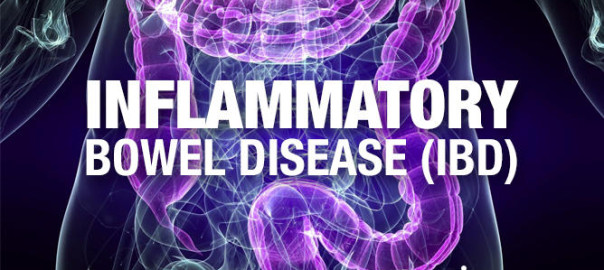Improvements in IBD Therapies Possible with Intestinal Stem Cells

The Centers for Disease Control and Prevention (CDC) estimates that more than 1 million people in the United States suffer from inflammatory bowel disease (IBD), a chronic inflammatory condition of the gut for which there is no prevention or cure. While we know IBD is more common in people of Ashkenazic Jewish and Caucasian origin, its cause remains unknown.
What is IBD?
Inflammatory bowel disease refers to a group of conditions affecting the small intestine and colon. Crohn’s disease and ulcerative colitis are the most common types of IBD. The condition is associated with an array of gastrointestinal symptoms including cramps, fever, diarrhea, and weight loss. Ulcerative colitis is a particularly severe form of IBD, characterized by rectal urgency, diarrhea up to 20 times a day, bleeding, pain, cramping, loss of appetite, and anemia from blood loss. Depending on the severity of the condition, symptoms can flare up and remit, but in 5 to 10 percent of people, there are no remissions and IBD symptoms are present all the time.
How is IBD treated?
Since there is no known cure, treatment is aimed at symptomatic control with dietary modifications and medications such as antidiarrheals and anti-inflammatories. A short course of steroids can help control active disease. Severe cases of ulcerative colitis may need immunomodulator medications or even surgery to remove a part of the intestine. Children with IBD may require supplements to support normal growth and development.
How can stem cell therapy help people with IBD?
A recent study published in the journal Cell has identified the location of intestinal stem cells as well as metabolites that inhibit their proliferation. These findings are important because they can help improve the currently available therapeutic approaches to IBD and other intestinal diseases. Until now, very little was known about stem cells that inhabit the gut, but it was presumed that intestinal stem cells, like stem cells found in other tissues of the body, can help replace damaged tissue in the intestines.
What did the research show?
Researchers involved with the study identified that butyrate was a strong proliferation inhibitor for intestinal stem cells and prevented them from reproducing. They also found that intestinal stem cells are located in sac-like structures called the crypts of Leiberkuhn where they are protected and prevented from coming in contact with butyrate and other such metabolites. However, when the intestines are injured, these stem cells become exposed to metabolites like butyrate and can no longer proliferate.
The crypts of Leiberkuhn were identified more than two and a half centuries ago, but their function remained a mystery. Senior study author, Dr. Thaddeus Stappenbeck, explains that the study findings indicate these protective crypts probably evolved to protect intestinal stem cells which are vital for the intestines to regenerate their inner lining.
What does the future hold for IBD patients?
Researchers are testing more than 100 different metabolites obtained from the mouse gut to see which of them can boost intestinal stem cell proliferation. The anatomy of the crypts is also being looked at more closely, and butyrate-producing bacteria in the intestines are the subject of further study. A better understanding of the biology of the intestines will lead to the development of more effective therapeutic approaches for IBD.
References:
1. http://ibdnewstoday.com/2016/06/06/insights-intestinal-stem-cells-help-improve-ibd-therapies/
2. http://www.cdc.gov/ibd/ibd-epidemiology.htm
3. http://www.webmd.com/ibd-crohns-disease/
Image courtesy of https://www.medicaljane.com


